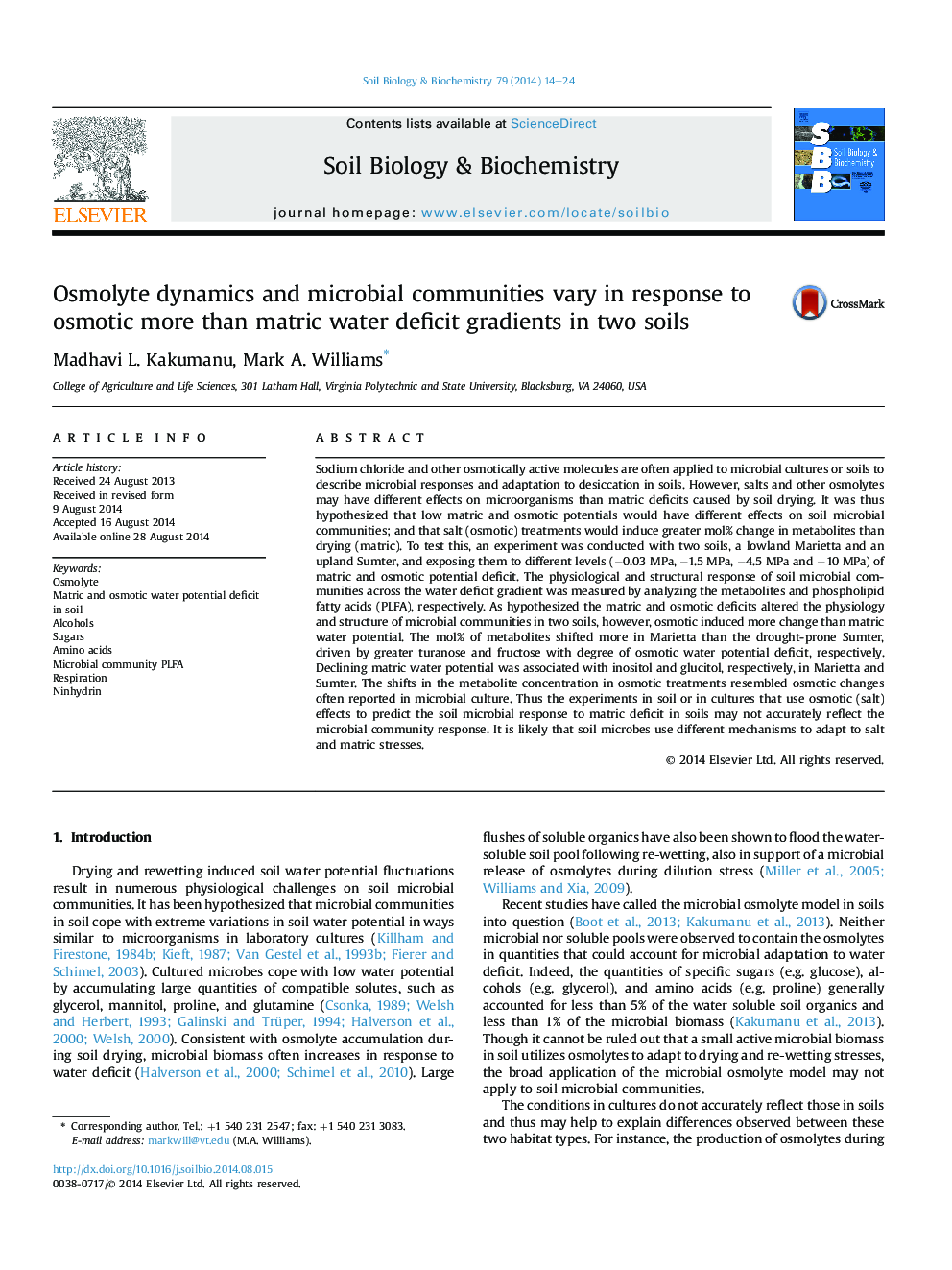| کد مقاله | کد نشریه | سال انتشار | مقاله انگلیسی | نسخه تمام متن |
|---|---|---|---|---|
| 2024635 | 1542605 | 2014 | 11 صفحه PDF | دانلود رایگان |
• Soil communities responded differently to matric and osmotic water potential.
• Mol% of osmolytes changed more to osmotic than matric water deficit.
• Microbial pools (e.g sugars) changed more from osmotic compared to matric water deficit.
• The osmolyte model for describing community response to soil drying needs further scrutiny.
Sodium chloride and other osmotically active molecules are often applied to microbial cultures or soils to describe microbial responses and adaptation to desiccation in soils. However, salts and other osmolytes may have different effects on microorganisms than matric deficits caused by soil drying. It was thus hypothesized that low matric and osmotic potentials would have different effects on soil microbial communities; and that salt (osmotic) treatments would induce greater mol% change in metabolites than drying (matric). To test this, an experiment was conducted with two soils, a lowland Marietta and an upland Sumter, and exposing them to different levels (−0.03 MPa, −1.5 MPa, −4.5 MPa and −10 MPa) of matric and osmotic potential deficit. The physiological and structural response of soil microbial communities across the water deficit gradient was measured by analyzing the metabolites and phospholipid fatty acids (PLFA), respectively. As hypothesized the matric and osmotic deficits altered the physiology and structure of microbial communities in two soils, however, osmotic induced more change than matric water potential. The mol% of metabolites shifted more in Marietta than the drought-prone Sumter, driven by greater turanose and fructose with degree of osmotic water potential deficit, respectively. Declining matric water potential was associated with inositol and glucitol, respectively, in Marietta and Sumter. The shifts in the metabolite concentration in osmotic treatments resembled osmotic changes often reported in microbial culture. Thus the experiments in soil or in cultures that use osmotic (salt) effects to predict the soil microbial response to matric deficit in soils may not accurately reflect the microbial community response. It is likely that soil microbes use different mechanisms to adapt to salt and matric stresses.
Journal: Soil Biology and Biochemistry - Volume 79, December 2014, Pages 14–24
